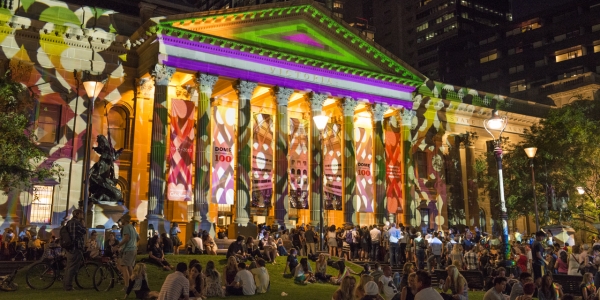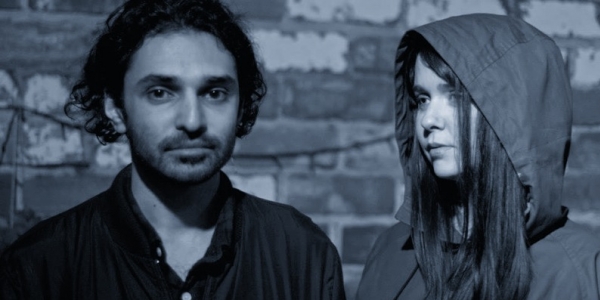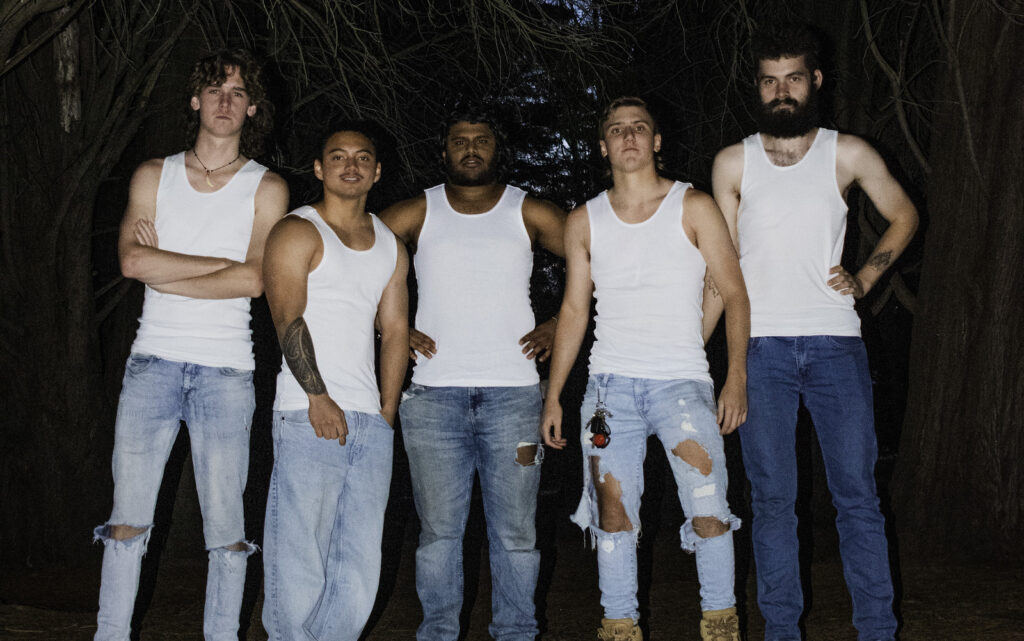“I was pretty chuffed about it. We always thought that there’d be a reasonable turn out,” admits Andrew Walsh, this year’s Artistic Director of White Night Melbourne. Walsh has 30 years of experience behind him, including stunts as the Executive Producer of the Opening and Closing Ceremonies of the 2004 Athens Olympics Games and Executive Producer/Creative Director of the 2006 Melbourne Commonwealth Games Opening and Closing Ceremonies, which means he’s no newbie to event management and direction; so when he talks about events, you can trust his word. “The really good thing about [White Night] was how happy the crowd was and how much of it was just about being free to wander around the city all night. It was just a really, good vibe.”
This year is the Director’s sophomore year in terms of managing White Night Melbourne, an endeavour that has been much easier than last year due to extra organisation time and hindsight. When the one-night festival debuted last year, Walsh and his dexterous team had assembled and structured the pieces of White Night Melbourne 2013 in just under six months; this time around, they had a year.
“Having a good time on the second time always makes it easy,” jokes Walsh. “It’s less bits and pieces, and more ‘things we’ve changed’ and ‘things we haven’t changed’, but its good in perspective — [an added] benefit of hindsight really,” confesses Walsh modestly, elaborating the ease of expanding the event from eight precincts to 11 precincts. “[The success of last year] gave us, I think, the license to be more ambitious. We’ve learnt some things about how intense the crowd was in certain places,” particularly Flinders Street, which had been changed into a main stage for The Cat Empire last year; “that we’ve moved some of our music programming to the north of the city so we can accommodate for bigger crowds. We expect more people this year, so we’ve expanded the site. Now [White Night] runs from the National Gallery of Victoria in the south of the city to the bowels in the north of the city. All along Swanston Street [will be] closed to cars and trams — northbound, southbound, east and west-bound.”
It’s this expansion of White Night that makes it even more thrilling. Featuring 11 themed precincts, including Northern Lights — which features a music program by Ali Bird (Morning Ritual, Melbourne Music Week) featuring Black Cab, The Murlocs, Beaches and Teeth & Tongue — and the return of everyone’s favourite light projections Wonderland, as well as show-stopping events, including a Prince-inspired mauve-rain installation Purple Rain and a timey-wimey, half-space, half-time light tunnel display, The Vortex, it’s hard not to be excited about White Night Melbourne.
“It’s about creating [a] journey and discovery [for attendees],” says Walsh, enthusiastically illustrating why light projection is a predominant art form in White Night. “When you’re in the dark, it’s nice to shine a light, but they [light projections] also change the way that we look at things; like how we’re transforming the outside of the NGV from being a really austere bluestone building into their amazing tattooed surface [in Tattooed City]. We’re doing the same thing at Flinders Street. We’re taking all these old buildings and turning them into a carnival environment. White Night is all about looking at your city in a different way.”
Other program highlights include J + R&B (Jazz and Rhythm and Blues) on the Bourke Street Mall, which will include appearances from Andrew Nolte’s Orchestra, a 1920s-inspired jazz band, and swing and boogie masters The Shuffle Club with Nina Ferro, a deconstruction of Tim Winton’s short story anthology, The Turning, spread across all 11 precincts and the much anticipated Tattooed City, conceived and curated by Walsh himself.
“If you hand around where our offices are [in Fitzroy], there are a lot of people walking around with tattoos. We’d thought it’d be interesting to take this form of body art and project it on the walls of the NGV,” explains Walsh, detailing it was an inspired combination between Melbourne’s reverence of street art and willingness to embrace artistic expression, regardless of its form. “We commissioned an artist called Nicole Reed, she’s really involved in the Melbourne tattoo scene, and we talks to lots of people about tattoos, but [what we’ll project] is a small representation of all the tattoos in Melbourne because there’s millions of them now. [Tattooed City] is a reference to the notions of Melbourne [being viewed] as a tattooed city, and the notion about how you talk to people about tattoos and how you look at tattoos. Do you ask for someone’s permission to look at tattoos? Do you take a glance or do you just stare at them? Then it enters the conversation of whether people have tattoos for themselves, whether they do it for public consumption, private consumption? Is it a personal thing between them and their partner? Is it tribal? Is it an artistic outlet? [Tattooed City] gives people permission to have a good ole stare” at tattoos and ask these questions introspectively, “and that in itself, is quite interesting.”
BY AVRILLE BYLOK-COLLARD







